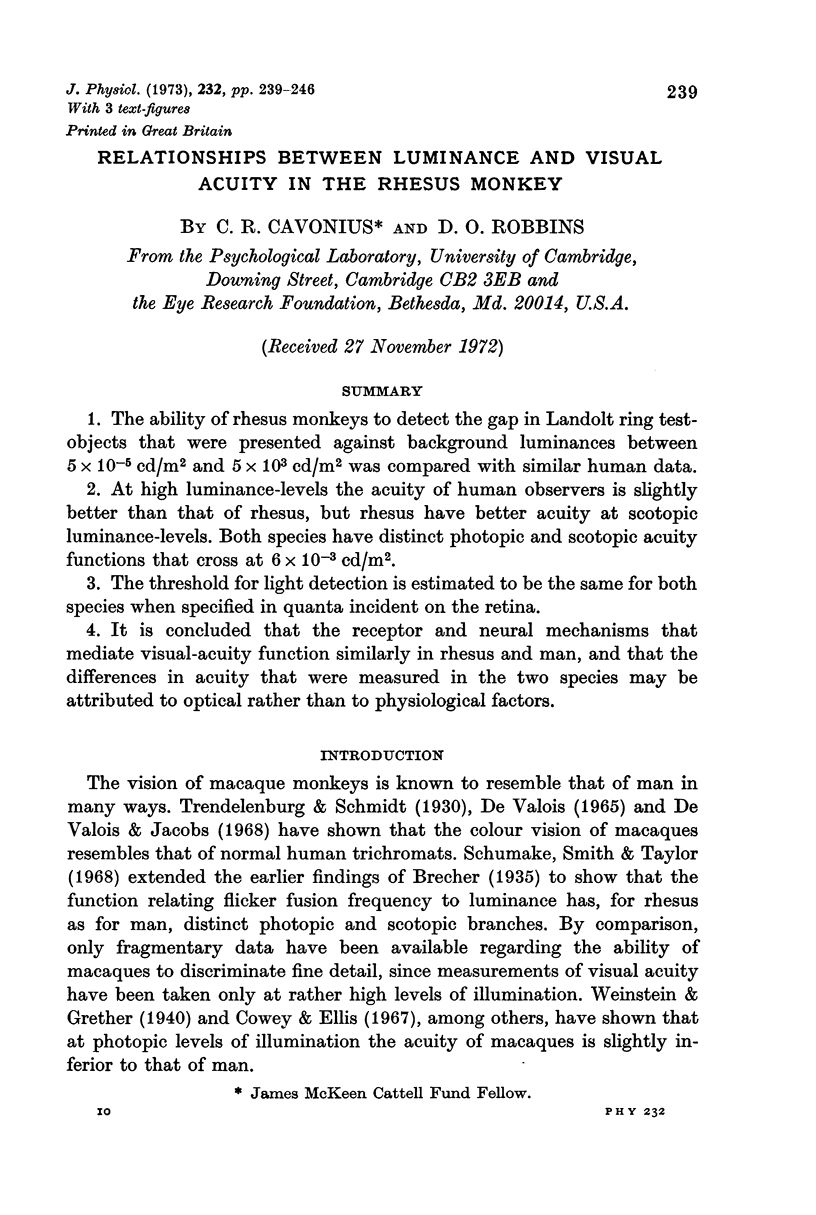Abstract
1. The ability of rhesus monkeys to detect the gap in Landolt ring test-objects that were presented against background luminances between 5 × 10-5 cd/m2 and 5 × 103 cd/m2 was compared with similar human data.
2. At high luminance-levels the acuity of human observers is slightly better than that of rhesus, but rhesus have better acuity at scotopic luminance-levels. Both species have distinct photopic and scotopic acuity functions that cross at 6 × 10-3 cd/m2.
3. The threshold for light detection is estimated to be the same for both species when specified in quanta incident on the retina.
4. It is concluded that the receptor and neural mechanisms that mediate visual-acuity function similarly in rhesus and man, and that the differences in acuity that were measured in the two species may be attributed to optical rather than to physiological factors.
Full text
PDF







Selected References
These references are in PubMed. This may not be the complete list of references from this article.
- Cowey A., Ellis C. M. Visual acuity of rhesus and squirrel monkeys. J Comp Physiol Psychol. 1967 Aug;64(1):80–84. doi: 10.1037/h0024821. [DOI] [PubMed] [Google Scholar]
- De Valois R. L., Jacobs G. H. Primate color vision. Science. 1968 Nov 1;162(3853):533–540. doi: 10.1126/science.162.3853.533. [DOI] [PubMed] [Google Scholar]
- Ozu H., Enoch J. M. Optical modulation by the isolated human fovea. Vision Res. 1972 Feb;12(2):245–251. doi: 10.1016/0042-6989(72)90115-0. [DOI] [PubMed] [Google Scholar]
- WESTHEIMER G., CAMPBELL F. W. Light distribution in the image formed by the living human eye. J Opt Soc Am. 1962 Sep;52:1040–1045. doi: 10.1364/josa.52.001040. [DOI] [PubMed] [Google Scholar]


